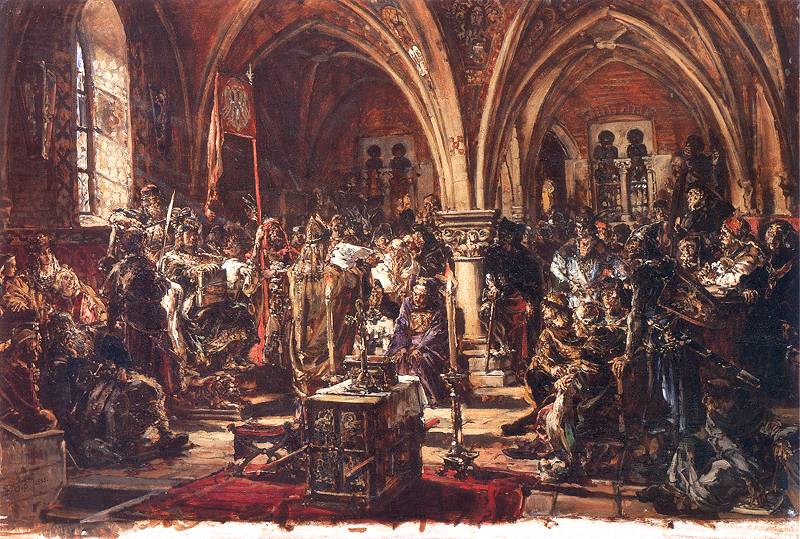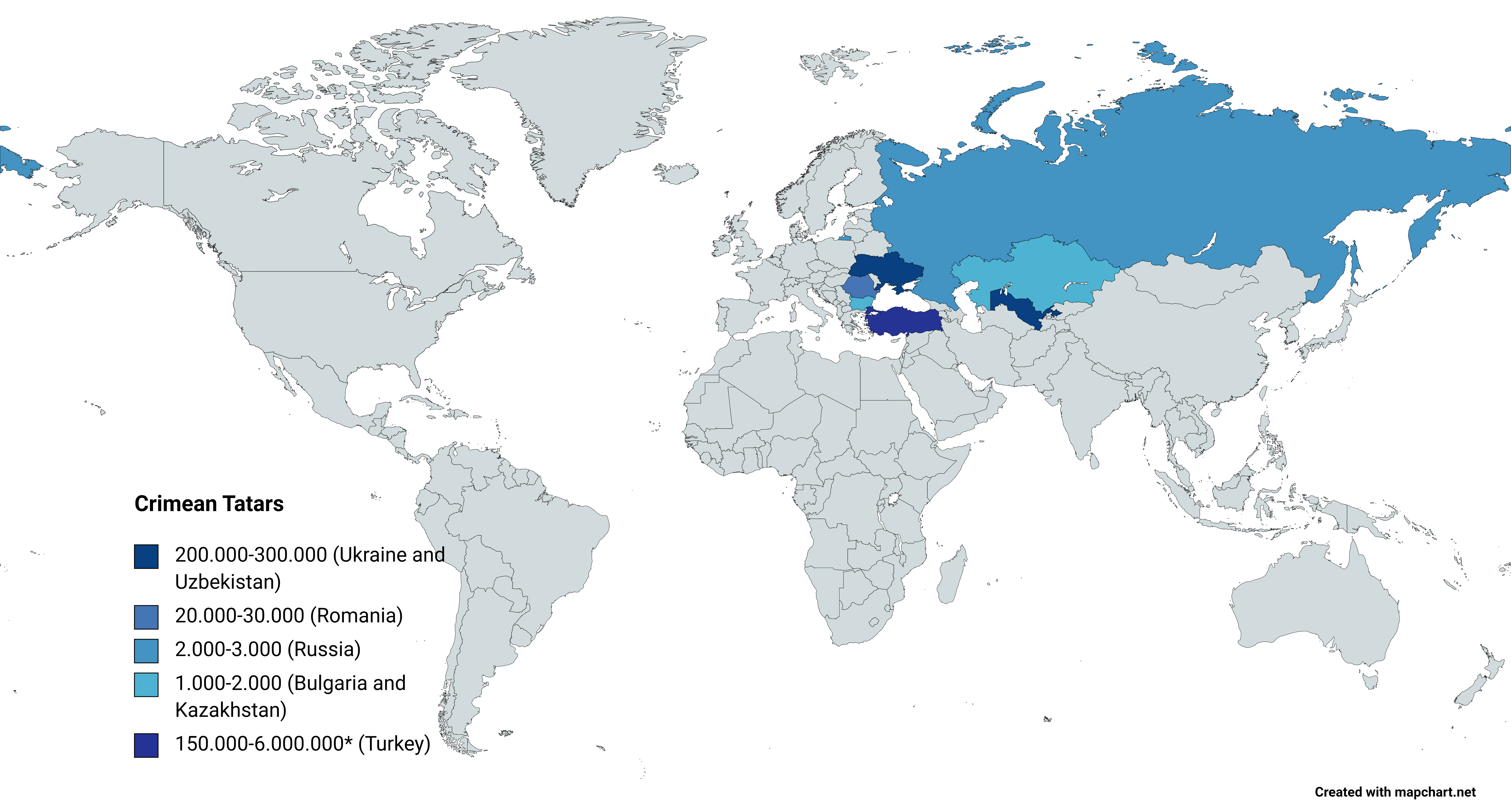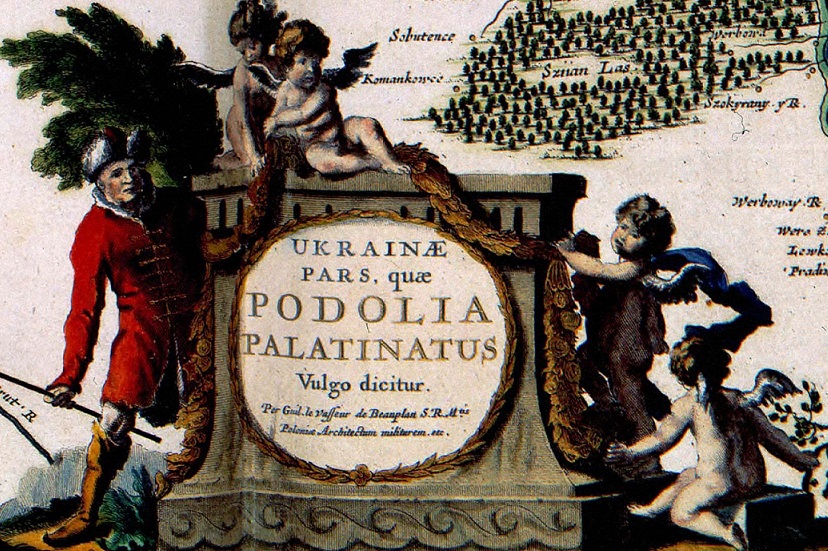|
1576 Polish–Lithuanian Royal Election
The free election of 1576 was the second royal election to be held in the Polish–Lithuanian Commonwealth, which took place in 1575/1576. In the night of June 28–29, 1574, King Henry III of France secretly left Poland to claim the French throne. The Commonwealth was left without a monarch, and the period of interregnum ended with a double election. After a few months of negotiations, Anna Jagiellon and Stephen Báthory were elected co-rulers. Background Henry was elected king of the Polish–Lithuanian Commonwealth in 1573. After finding out about the death of his brother, King Charles IX of France, who died on 30 May 1574, Henry decided to secretly leave Poland, and return to his homeland. This plan was supported by his mother, Catherine de' Medici, who resumed the regency until Henry's return from Poland. Polish nobility had previously considered this option: Henry was to marry Anna Jagiellon, and return to France, leaving his wife in the Commonwealth. Thus, the two nat ... [...More Info...] [...Related Items...] OR: [Wikipedia] [Google] [Baidu] |
Anna Jagiellon
Anna Jagiellon (, ; 18 October 1523 – 9 September 1596) was King of Poland, Queen of Poland and Grand Duke of Lithuania, Grand Duchess of Lithuania from 1575 to 1587. Daughter of Polish King and Lithuanian Grand Duke Sigismund I the Old and Italian duchess Bona Sforza, Anna received multiple proposals, but remained unmarried until the age of 52. After the death of King Sigismund II Augustus, her brother and the last male member of the Jagiellonian dynasty, her hand was sought by pretenders to the Polish-Lithuanian throne to maintain the dynastic tradition. Along with her then-fiancé Stephen Báthory, Anna was Royal elections in Poland, elected as co-ruler in the 1576 Polish–Lithuanian royal election, 1576 royal election of the Polish–Lithuanian Commonwealth. Their marriage was a formal arrangement and distant. While Báthory was preoccupied with the Livonian War, Anna spent her time on local administrative matters and several construction projects, including the ci ... [...More Info...] [...Related Items...] OR: [Wikipedia] [Google] [Baidu] |
Rheims
Reims ( ; ; also spelled Rheims in English) is the most populous city in the French department of Marne, and the 12th most populous city in France. The city lies northeast of Paris on the Vesle river, a tributary of the Aisne. Founded by the Gauls, Reims became a major city in the Roman Empire. Reims later played a prominent ceremonial role in French monarchical history as the traditional site of the coronation of the kings of France. The royal anointing was performed at the Cathedral of Reims, which housed the Holy Ampulla of chrism allegedly brought by a white dove at the baptism of Frankish king Clovis I in 496. For this reason, Reims is often referred to in French as ("the Coronation City"). Reims is recognized for the diversity of its heritage, ranging from Romanesque to Art-déco. Reims Cathedral, the adjacent Palace of Tau, and the Abbey of Saint-Remi were listed together as a UNESCO World Heritage Site in 1991 because of their outstanding Romanesque and ... [...More Info...] [...Related Items...] OR: [Wikipedia] [Google] [Baidu] |
Spanish Empire
The Spanish Empire, sometimes referred to as the Hispanic Monarchy (political entity), Hispanic Monarchy or the Catholic Monarchy, was a colonial empire that existed between 1492 and 1976. In conjunction with the Portuguese Empire, it ushered in the European Age of Discovery. It achieved a global scale, controlling vast portions of the Americas, Africa, various islands in Asia and Oceania, as well as territory in other parts of Europe. It was one of the most powerful empires of the early modern period, becoming known as "the empire on which the sun never sets". At its greatest extent in the late 1700s and early 1800s, the Spanish Empire covered , making it one of the List of largest empires, largest empires in history. Beginning with the 1492 arrival of Christopher Columbus and continuing for over three centuries, the Spanish Empire would expand across the Caribbean Islands, half of South America, most of Central America and much of North America. In the beginning, Portugal was ... [...More Info...] [...Related Items...] OR: [Wikipedia] [Google] [Baidu] |
Warsaw
Warsaw, officially the Capital City of Warsaw, is the capital and List of cities and towns in Poland, largest city of Poland. The metropolis stands on the Vistula, River Vistula in east-central Poland. Its population is officially estimated at 1.86 million residents within a Warsaw metropolitan area, greater metropolitan area of 3.27 million residents, which makes Warsaw the List of cities in the European Union by population within city limits, 6th most-populous city in the European Union. The city area measures and comprises List of districts and neighbourhoods of Warsaw, 18 districts, while the metropolitan area covers . Warsaw is classified as an Globalization and World Cities Research Network#Alpha 2, alpha global city, a major political, economic and cultural hub, and the country's seat of government. It is also the capital of the Masovian Voivodeship. Warsaw traces its origins to a small fishing town in Masovia. The city rose to prominence in the late 16th cent ... [...More Info...] [...Related Items...] OR: [Wikipedia] [Google] [Baidu] |
Sejm
The Sejm (), officially known as the Sejm of the Republic of Poland (), is the lower house of the bicameralism, bicameral parliament of Poland. The Sejm has been the highest governing body of the Third Polish Republic since the Polish People's Republic, transition of government in 1989. Along with the upper house of parliament, the Senate of Poland, Senate, it forms the national legislature in Poland known as Parliament of Poland#National Assembly, National Assembly (). The Sejm comprises 460 Member of parliament, deputies (singular or ) elected every four years by Universal suffrage, universal ballot. The Sejm is presided over by a Speaker of parliament, speaker, the "Marshal of the Sejm" (). In the Kingdom of Poland (1385–1569), Kingdom of Poland, the term ''Sejm'' referred to an entire two-Chambers of parliament, chamber parliament, comprising the Chamber of Deputies (), the Senate and the King. It was thus a three-estate parliament. The 1573 Henrician Articles strengthe ... [...More Info...] [...Related Items...] OR: [Wikipedia] [Google] [Baidu] |
Jakub Uchanski
Jakub is a masculine given name. It is the Polish, Belarusian, Czech, and Slovak form of the name Jacob. accessed on 7 January 2025 In Polish, the form of Jakub is Kuba. List of people with the name A * (born 2004), Polish footballer * (born 1999), Polish footballer * Jakub Arak ...[...More Info...] [...Related Items...] OR: [Wikipedia] [Google] [Baidu] |
Union Of Lublin
The Union of Lublin (; ) was signed on 1 July 1569 in Lublin, Poland, and created a single state, the Polish–Lithuanian Commonwealth, one of the largest countries in Europe at the time. It replaced the personal union of the Crown of the Kingdom of Poland and the Grand Duchy of Lithuania with a real union and an elective monarchy, as Sigismund II Augustus, the last of the Jagiellons, remained childless after three marriages. In addition, the autonomy of Royal Prussia was largely abandoned. The Duchy of Livonia, tied to Lithuania in real union since the Union of Grodno (1566), became a Polish–Lithuanian Condominium (international law), condominium. The Commonwealth was ruled by a single elected monarch who carried out the duties of King of Poland and Grand Duke of Lithuania, and governed with a common Senate and diet (assembly), parliament (the ''Sejm''). The Union is seen by some as an evolutionary stage in the Polish–Lithuanian Union, Polish–Lithuanian alliance and perso ... [...More Info...] [...Related Items...] OR: [Wikipedia] [Google] [Baidu] |
Election Sejm
Election sejm (; ) was one of three kinds of special general sejm in pre-partition Polish–Lithuanian Commonwealth. Upon vacancy of the throne, the election sejm, meeting at Wola outside Warsaw, elected a new king. Any hereditary nobleman could vote in the Election Parliament, if present. Often close to 100,000 nobles came to those sejms. The other two kinds of special sejm—likewise concerned with the filling of the throne—were the " convocation sejm" and the " coronation sejm." References Further reading * See also * Royal elections in Poland Royal elections in Poland ( Polish: ''wolna elekcja'', lit. ''free election'') were the elections of individual kings, rather than dynasties, to the Polish throne. Based on traditions dating to the very beginning of the Polish statehood, streng ... Sejm of the Polish–Lithuanian Commonwealth {{Europe-election-stub ... [...More Info...] [...Related Items...] OR: [Wikipedia] [Google] [Baidu] |
Grodno
Grodno, or Hrodna, is a city in western Belarus. It is one of the oldest cities in Belarus. The city is located on the Neman, Neman River, from Minsk, about from the Belarus–Poland border, border with Poland, and from the Belarus–Lithuania border, border with Lithuania. Grodno serves as the administrative center of Grodno Region and Grodno District, though it is administratively separated from the district. the city has a population of 363,718. The modern city of Grodno, founded in 1127, originated as a small fortress and trading outpost on the border of the Baltic tribal union of the Yotvingians. It was also a home to the Dregoviches Slavic tribe. It was a significant city in Black Ruthenia and later part of the Grand Duchy of Lithuania, which joined the Polish-Lithuanian Union in 1385. Grodno faced numerous invasions, most notably by the Teutonic Knights. The city was a key trade, commerce, and cultural center in the Polish-Lithuanian Commonwealth, and one of its roya ... [...More Info...] [...Related Items...] OR: [Wikipedia] [Google] [Baidu] |
Crimean Tatars
Crimean Tatars (), or simply Crimeans (), are an Eastern European Turkic peoples, Turkic ethnic group and nation indigenous to Crimea. Their ethnogenesis lasted thousands of years in Crimea and the northern regions along the coast of the Black Sea, uniting Mediterranean basin, Mediterranean populations with those of the Eurasian Steppe.''Агджоян А. Т., Схаляхо Р. А., Утевская О. М., Жабагин М. К., Тагирли Ш. Г., Дамба Л. Д., Атраментова Л. А., Балановский О. П.'Генофонд крымских татар в сравнении с тюркоязычными народами Европы, 2015 Genome-wide study of the Crimean Tatars unveiled connections between them and the genomes of individuals from the Steppe during the Bronze Age, specifically those associated with the Yamnaya culture, Yamnaya archaeological culture. Until the 20th century, Crimean Tatars were the most populous demographic cohort ... [...More Info...] [...Related Items...] OR: [Wikipedia] [Google] [Baidu] |
Podolia
Podolia or Podillia is a historic region in Eastern Europe located in the west-central and southwestern parts of Ukraine and northeastern Moldova (i.e. northern Transnistria). Podolia is bordered by the Dniester River and Boh River. It features an elongated plateau and fertile agricultural land covering an area of . The two main rivers serve as important trade channels. Podolia is known for its cherries, mulberries, melons, gourds, and cucumbers. The region has a rich history, dating back to the Neolithic, with various tribes and civilizations occupying it over time. It became part of the Kingdom of Galicia–Volhynia, the Golden Horde, the Kingdom of Poland, the Grand Duchy of Lithuania, the Ottoman Empire, the Habsburg monarchy of Austria, and the Russian Empire. In the 20th century, Podolia underwent various political changes, with both the Second Polish Republic and the Soviet Union controlling parts of it at different times. Podolian culture is renowned for its folk icon-p ... [...More Info...] [...Related Items...] OR: [Wikipedia] [Google] [Baidu] |
Red Ruthenia
Red Ruthenia, also called Red Rus or Red Russia, is a term used since the Middle Ages for the south-western principalities of Kievan Rus', namely the Principality of Peremyshl and the Duchy of Belz, Principality of Belz. It is closely related to the term Cherven Cities ("Red Cities"). First mentioned by that name in a Polish chronicle of 1321, Red Ruthenia was the portion of Ruthenia incorporated into Poland by Casimir the Great during the 14th century. Following the Mongol invasion of Kievan Rus' in the 13th century, Red Ruthenia was contested by the Grand Duchy of Lithuania (the Gediminids), the Kingdom of Poland (1025–1385), Kingdom of Poland (the Piast dynasty, Piasts), the Kingdom of Hungary (1301–1526), Kingdom of Hungary and the Kingdom of Galicia–Volhynia. After the Galicia–Volhynia Wars, for about 400 years, most of Red Ruthenia became part of Kingdom of Poland (1385–1569), Poland as the Ruthenian Voivodeship. Nowadays, the region comprises parts of western Uk ... [...More Info...] [...Related Items...] OR: [Wikipedia] [Google] [Baidu] |








